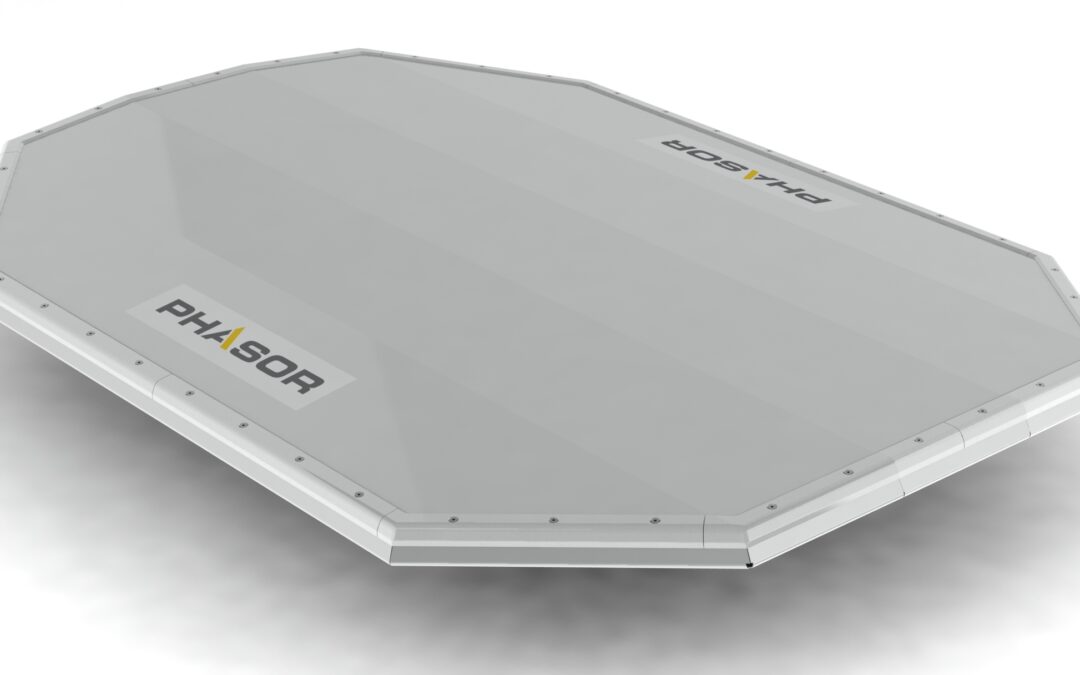How GEO, MEO and LEO satellites combine to re-shape the future of maritime connectivity
For connectivity at sea, nothing can rival satellite and for decades it has been a reliable source of communications links for mariners. Unconstrained by terrestrial infrastructures’ limited reach, satellite delivers communications to virtually anywhere in the world.
Today, the satellite industry is experiencing a revolution that will transform it forever. These changes will dramatically affect the reach, affordability and accessibility of “over-the-horizon”, or satellite-based broadband wireless connectivity – a paradigm shift that will completely change maritime communications.
Let’s take a closer look at these changes, and how innovative technology like Phasor’s new break-through electronically steerable antenna (ESA) device can help yachts achieve this new connectivity potential.
Communications satellites operate in three types of orbits: Geosynchronous Orbit (GEO), Medium Earth Orbit (MEO) and Low Earth Orbit (LEO). Traditionally, GEO satellites have been the mainstay of the industry. Located over 37,500km above our heads, these large communications spacecrafts travel at the same speed as the Earths’ rotation, and therefore appear to be “fixed” in one location in the sky. These satellites, though extremely capable as broadband communications relays, suffer from latency. This can affect certain types of communications such as real-time voice & video communication, due to the time interval for a signal to reach and return from the satellite. Additionally, GEO reach is limited in coverage in the extreme Northern and Southern Hemispheres where the “look angle” from an antenna to the equatorial satellite is extremely low, impairing communications links.
The other two types of satellites are grouped together under the title of “Non Geosynchronous Satellites” (NGSOs). These travel in multiple orbital planes around the Earth, at dramatically closer orbits. MEOs and LEOs were traditionally reserved for scientific, weather, government/defence and narrowband communications missions. The important and notable change that is now rapidly sweeping the industry is the use of smaller satellites in the MEO and LEO orbits for “wideband” (Ku and Ka frequency) broadband communications. Due to their much closer proximity to the Earth, latency is no longer an issue, and the multiple orbital planes (other than at the equator) ensure coverage literally everywhere on Earth, including the Poles.
The planned MEO and LEO constellations will consist of many – in some cases thousands – of smaller satellites that will orbit the Earth much faster than GEO satellites. This means that the ground terminals (antennas) that receive the signals must be able to track these moving communications satellites (as apposed to the apparently “fixed” satellites in GEO). In addition, it is required that the ground terminal must track two LEOs/MEOs simultaneously, as one comes into view and transits across the sky, the second must be tracked and engaged to ensure the network remains connected seamlessly.

These new developments within the satellite industry have the potential to create huge benefits for superyacht owners and maritime communicators.
If GEO, MEO and LEO satellites, with all the individual and complimentary benefits they bring, can be interoperable, superyacht owners and maritime communicators will be able to realise a connected experience that is unprecedented– the ability to truly connect EVERYWHERE in broadband, independent of location or which type of asset (GEO/MEO/LEO) is being accessed. This powerful combination is being built and launched today, but will only work with a new breed of enabling technology – the electronically steerable antenna (ESA).
The right kind of access technology – agile, reconfigurable, high-performance – unlocks the potential of this newly developing space segment infrastructure. Without it, these ambitious constellations and their plethora of services and new applications they empower literally cannot be realised. The ESA is the gateway technology that will enable these transformative communications.
Phasor Inc. was founded four years ago to solve this problem. During the development process of its ESA technology, the team at Phasor focused upon the evolving nature of enterprise broadband connectivity in maritime markets, and on satellite industry trends.
Phasor is now preparing to take its ESA through beta testing, and then to bring to market a flat panel solution that is future proof, enterprise grade and that offers unrivalled performance, scalability and reliability. The ESA is solid-state (no moving parts or motors), stands at just 2 inches high and will conform to the deck or superstructure of any vessel. This kind of advanced antenna simply does not exist anywhere else today, and it is set to disrupt the mobility and enterprise broadband communications markets.
The demand for broadband mobility is on a growth trajectory that will continue for the foreseeable future, accelerated by the advent of new and more powerful satellite communications fleets. The introduction of a truly high performance flat panel antenna, with the ability to track multiple satellites from a single aperture simultaneously, is the critical piece that will complete the broadband mobility jigsaw.
In the near future, Phasor will offer its unrivalled ESA technology to the superyacht market and help define a new era of connectivity at sea.
Visit Phasor Solutions
Want to hear more from Superyacht Technology News? Subscribe to our magazine free!

